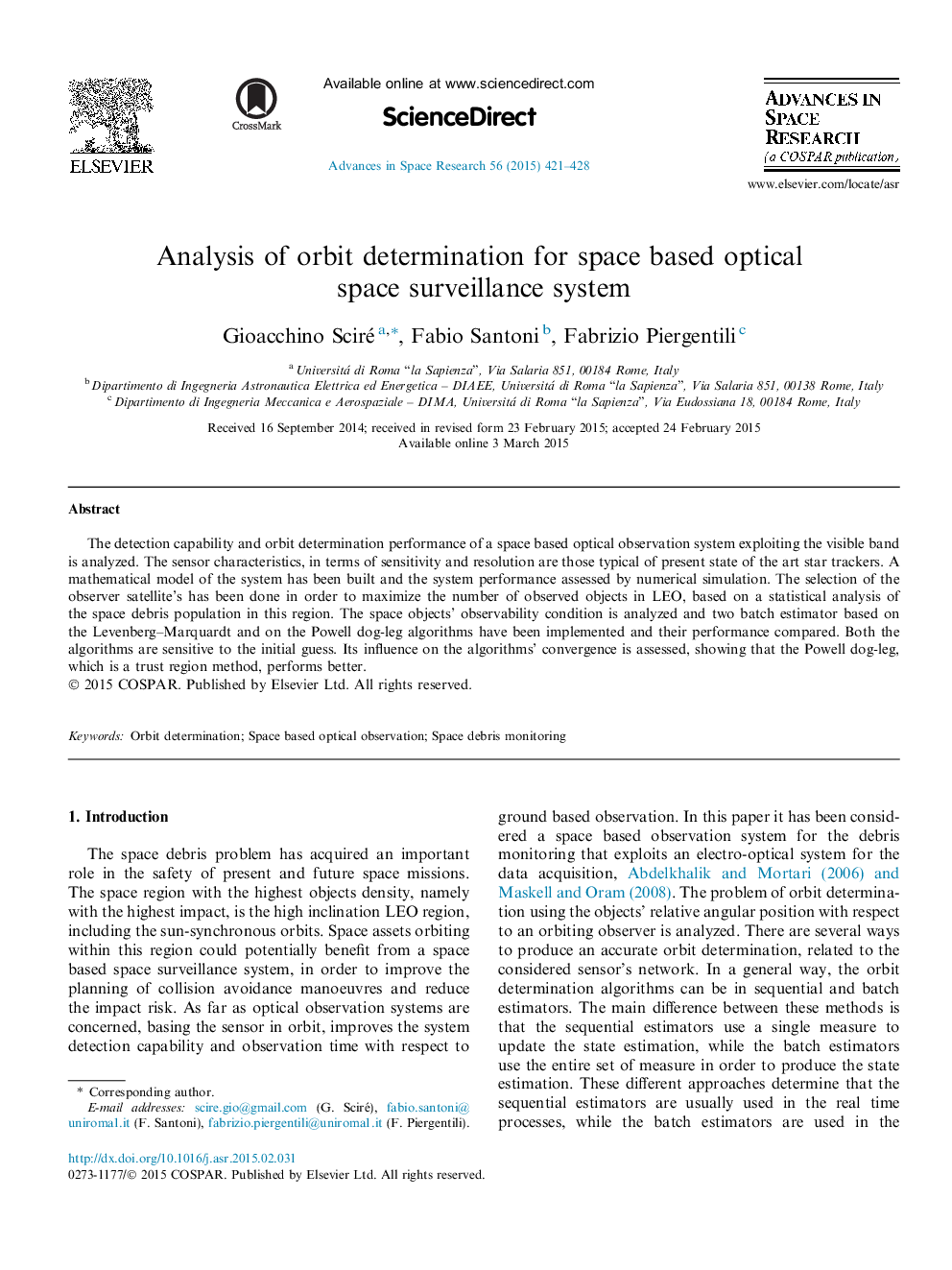| Article ID | Journal | Published Year | Pages | File Type |
|---|---|---|---|---|
| 1763870 | Advances in Space Research | 2015 | 8 Pages |
Abstract
The detection capability and orbit determination performance of a space based optical observation system exploiting the visible band is analyzed. The sensor characteristics, in terms of sensitivity and resolution are those typical of present state of the art star trackers. A mathematical model of the system has been built and the system performance assessed by numerical simulation. The selection of the observer satellite's has been done in order to maximize the number of observed objects in LEO, based on a statistical analysis of the space debris population in this region. The space objects' observability condition is analyzed and two batch estimator based on the Levenberg-Marquardt and on the Powell dog-leg algorithms have been implemented and their performance compared. Both the algorithms are sensitive to the initial guess. Its influence on the algorithms' convergence is assessed, showing that the Powell dog-leg, which is a trust region method, performs better.
Keywords
Related Topics
Physical Sciences and Engineering
Earth and Planetary Sciences
Space and Planetary Science
Authors
Gioacchino Sciré, Fabio Santoni, Fabrizio Piergentili,
